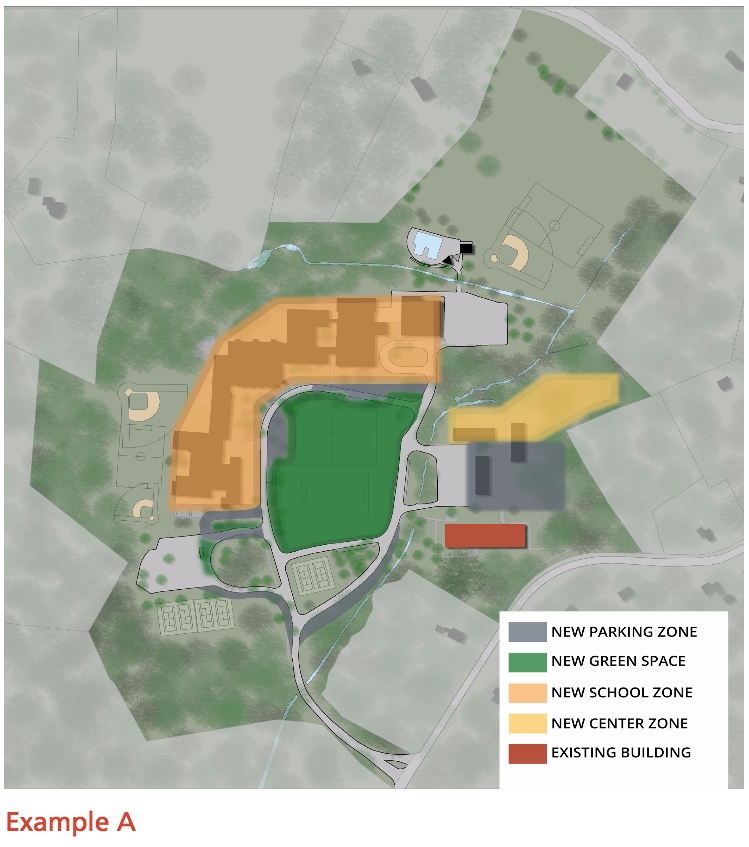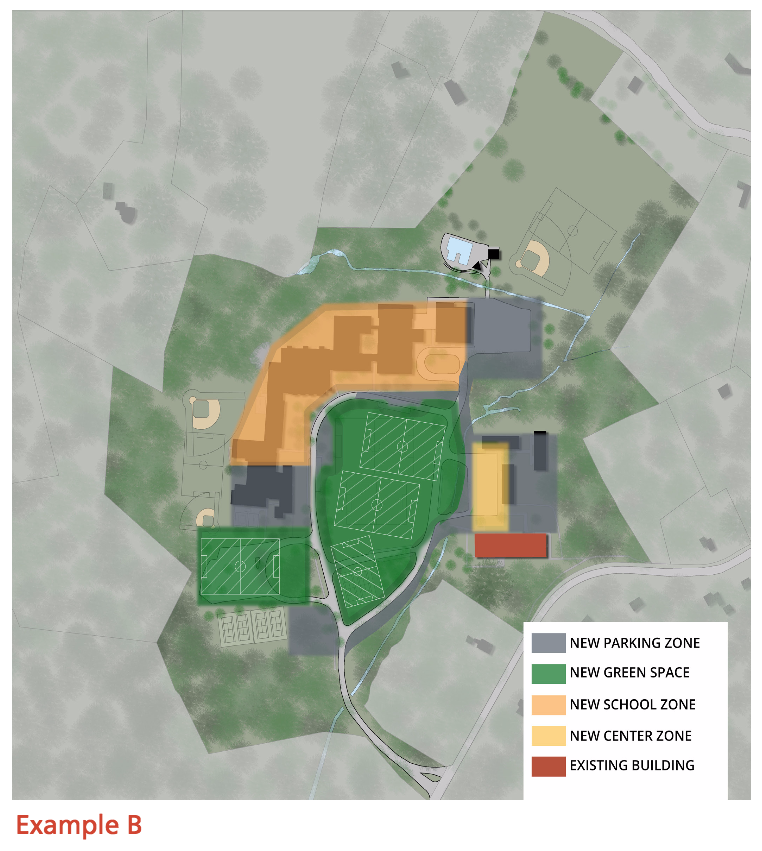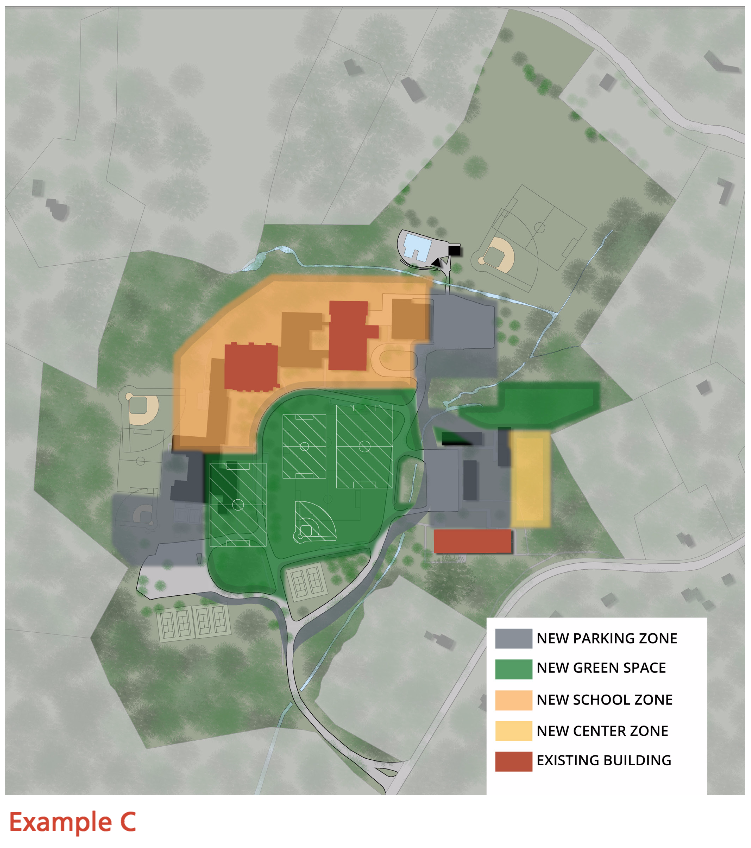By Alice Waugh
The Campus Master Planning Committee (CMPC) this week presented its final report, which includes three potential campus configuration scenarios with site work estimates ranging from $2.76 million to $4.06 million.
LLB Architects, consultants for the CMPC, recommended spending at least $900,000 on roads soon, even in the absence of a school project or community center project, because the condition of the roads on campus is “poor.”
The report lists some grand-total cost estimates incorporating prices for a school project ($30–$48 million) and a community center ($10–15 million) anywhere from $43–$69 million on the lower side and $73–$77 million on the higher end.
Carole Kasper, chair of the CMPC, noted that her group was not asked to develop specific plans or make recommendations. The report aimed to “show what the potential tradeoffs are, and that I think it did that pretty well.”
The report fleshed out the three campus examples that the consultants presented at the State of the Town meeting in November 2015. The ideas differ on elements such as where a proposed community center would go, and how parking and roadways would be configured. Highlights of each (click images to enlarge):

Example A
- The most conservative of the three approaches, leaving the school footprint and vehicular access mostly unchanged and limiting athletic field improvements to leveling and regrading the existing fields.
- The community center would go between the current Brooks and Hartwell parking lots; the Hartwell lot would be expanded onto land now occupied by the north and east pods, leaving the center pod intact.
Estimated cost: $2.76 million*
 Example B
Example B
- Put the community center placed along the western side of the existing Hartwell lot; demolish all three pods.
- Shrink the zone designated for the school footprint on the southern side, replacing some of the existing building at that end with new parking.
- Requires some new school construction in addition to renovation, but would allow the school to remain as a one-story building.
- Remove the two tennis courts at the south end of the ballfield to make way for another small playing field; add another field south of the new parking at the south end of the school.
Estimated cost: $3.17 million*
Example C
- This is “the most liberal approach to addressing the needs of the schools” and might best accommodate a phased approach to school renovations by making some of the existing school available for swing space once the new portion has been completed.
- Locate the community center at the east side of the Hartwell area.
- Remove the loop road, which “presents the opportunity to transform this connection [between built and unbuilt areas] into a pedestrian-focused environment… With no motor vehicles in the area, the chance to establish not only walkways but landscape features, learning opportunities, and gathering places is unmatched.”
- Substantial potential for new fields.
- The school zone is the most condensed of the three approaches, probably leading to a two-story building.
- Parking would be maximized and concentrated in the Hartwell, Reed Gym, and Smith School tennis courts areas.
Estimated cost: $4.06 million*
* Cost figures include asphalt curbing. Add $14,000–$20,000 for concrete curbs, or $52,000–$75,000 for granite curbs. Also, add $150,000 in each case for burying electrical service vs. upgrading the existing above-ground service.
“I couldn’t be more pleased” with the CMPC report, Selectman Peter Braun said. “It looks like it hit the nail on the head. I think this is going to be a fabulous reference guide for future committees and I’m sure they’ll all be thanking you for eons.”
“This has provided another piece of the puzzle to help us understand the campus as a whole, said School Committee chair Jennifer Glass. “We’re much less likely to say ‘If only we had thought of this idea or that idea’.”
Lincoln was shut out in December in its latest attempt to get into the state funding pipeline for a school project. Consequently, the School Committee will ask voters at Town Meeting next month whether Lincoln should apply again in the hopes of getting the state to pay for around 40 percent of the project, or go it alone in terms of funding.
“We’re very committed as a school committee to getting public guidance,” Glass said.
